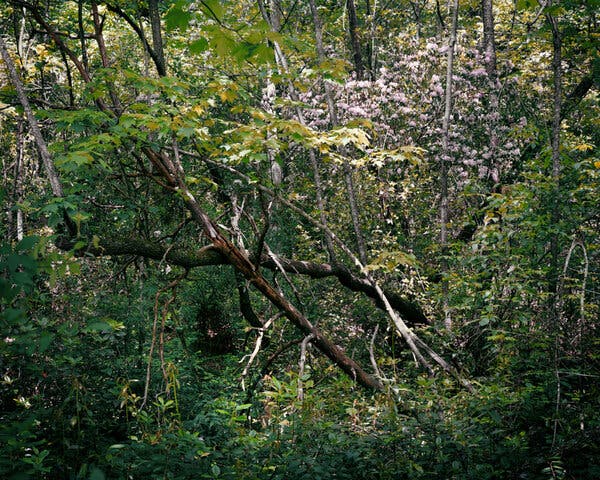There was a period when watering the yard was unnecessary. Natural rainfall kept the drought-resistant pollinator garden healthy, and the well-established trees and shrubs had deep roots that sustained them through dry spells. However, droughts grew more frequent and severe. By 2019, daily watering became essential, requiring me to move a sprinkler between flower beds each day. Leaving town for more than a couple of days meant risking the loss of the garden.
To address this challenge, my husband devised a Christmas gift a few years ago: an irrigation system connected to an app that allows us to control watering remotely, even when away. This setup includes Wi-Fi receivers, faucet extenders, splitters, and extensive hoses—many of which were left by our late neighbor who believed we had too many trees. In contrast, we firmly believe there is no such thing as too many trees.
Our property was heavily wooded before we moved in 30 years ago, and the number of trees has only increased since. Some were planted intentionally, while others arrived naturally via seeds carried by wind, birds, or animals. Currently, our half-acre hosts 72 trees spanning 26 species native to Middle Tennessee. These trees support various insect species, produce nuts, drupes, or berries, or provide both. Essentially, each tree functions as a mini-ecosystem, nourishing and sheltering much of the local wildlife.
When a seedling takes root in an inconvenient spot—potentially causing issues for utility lines or other trees—I transplant it elsewhere in the yard. Otherwise, I allow wild seedlings to flourish independently. In an increasingly hot century, nature is better equipped to determine which young trees will survive. For humans, it remains a privilege to live amidst trees that sustain the local ecosystem.
While most trees manage well through dry periods, the pollinator beds rely on the improvised irrigation system during severe droughts. This year, however, the sprinklers have seen little use. By mid-June, Nashville had received 35 inches of rainfall—the fourth wettest start to a year on record. The relentless rain extended well into the summer months when drought typically arrives.
July was among the hottest on record in Nashville, with extreme heat combined with unprecedented humidity pushing heat index readings above 100 degrees Fahrenheit—often exceeding 110—day after day. The intense conditions caused doors and windows to swell, making it difficult to open the front door without significant effort.


0 Comments
No comments yet. Be the first to comment!